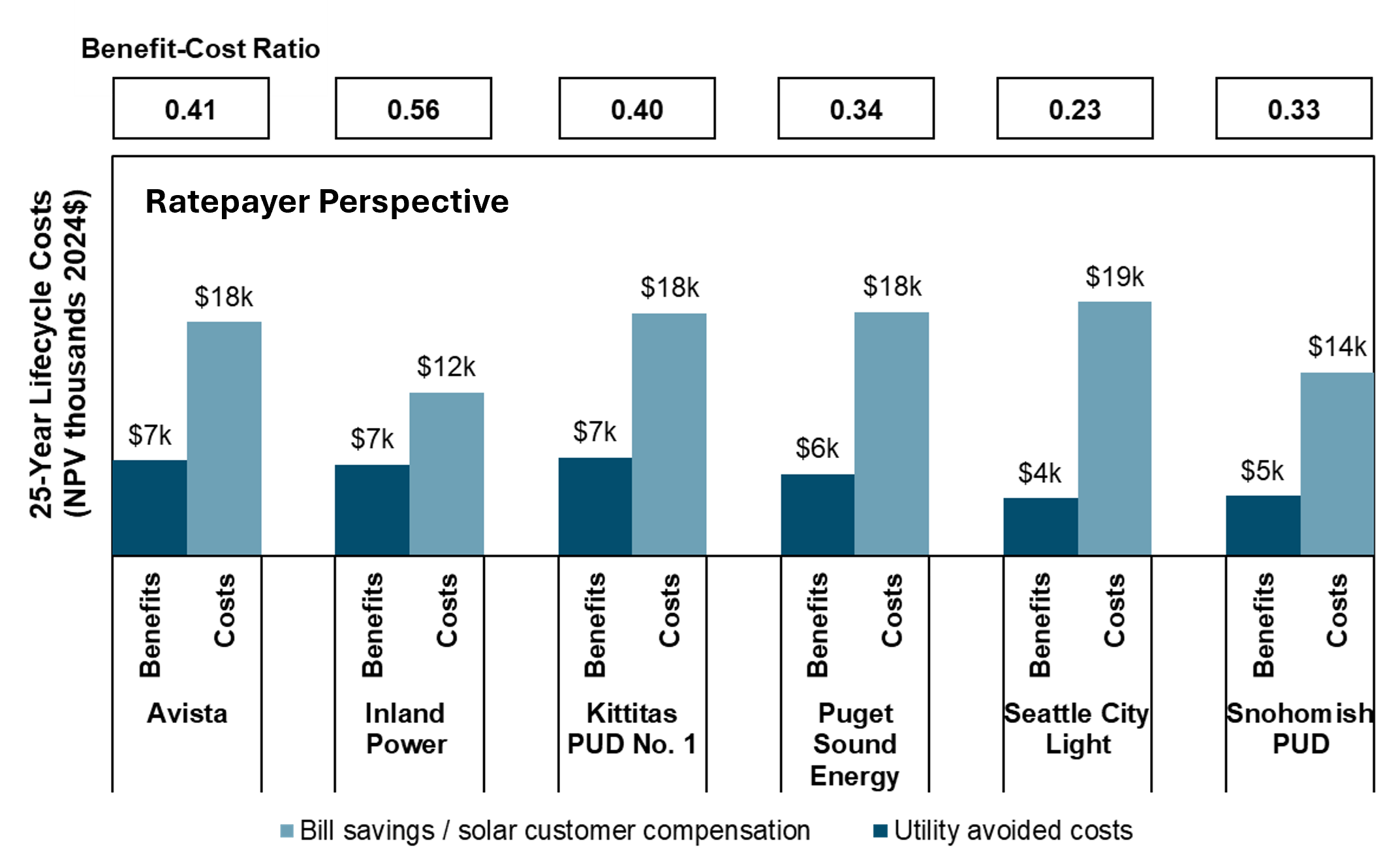
E3 was retained by a large group of public and investor-owned utilities in Washington to evaluate the benefits, costs, and cost shifts associated with customer solar under Net Energy Metering (NEM). Under Washington law, utilities must offer NEM to customers until they reach a capacity threshold based on their historical peak loads. Once they have reached this “legislative minimum,” they may consider alternative tariff structures. Five utilities in Washington have exceeded the legislative minimum and many others are expected to in the next few years, and stakeholders in Washington are beginning to reconsider the future of NEM.
With the help of a Technical Advisory Group that included utilities, labor groups, environmental advocates, solar industry advocates, business advocates, and the Washington Department of Commerce, E3 developed a robust catalog of benefits and costs of customer solar. E3 also worked with a group of six “detailed study utilities” to assemble data on NEM solar systems and to calculate a forecast of hourly avoided costs for each utility. E3 also developed methods to quantify additional societal benefits to residents of Washington, including reduced criteria pollutant emissions, reduced greenhouse gas emissions, and reduced land use impacts.
The key findings from the study are:
- NEM solar can provide significant benefits to participants through bill savings ranging from $750-1200 per year for a representative residential solar system. Based on data from the Washington State Environmental Health Disparities Map, NEM solar is predominantly installed in census tracts with low socioeconomic vulnerability, indicating that bill savings from NEM solar are predominantly accruing to customers in wealthier neighborhoods.
- Solar customer compensation through NEM significantly exceeds the value of customer solar to the utility power systems, resulting in a cost shift from solar to non-solar customers. The total residential cost shift under the current NEM program is forecast to be $39M/year by the end of 2024, growing to $49M/year by 2030. The cost shift could grow to as high as $136M/year by 2030 if the legislative minimum were removed.
- The Societal Cost Test shows a benefit cost ratio from 0.50-0.64, indicating that the lifetime benefits from NEM solar are less than the lifetime costs to residents of Washington, even when including additional societal benefits such as lower criteria pollutant emissions and reduced land use are considered. This indicates there are a variety of means to achieve the societal benefits quantified in this study, including NEM solar, utility-scale solar and other renewables, energy efficiency, demand response, and others.

The full E3 report is now available on the E3 site.


